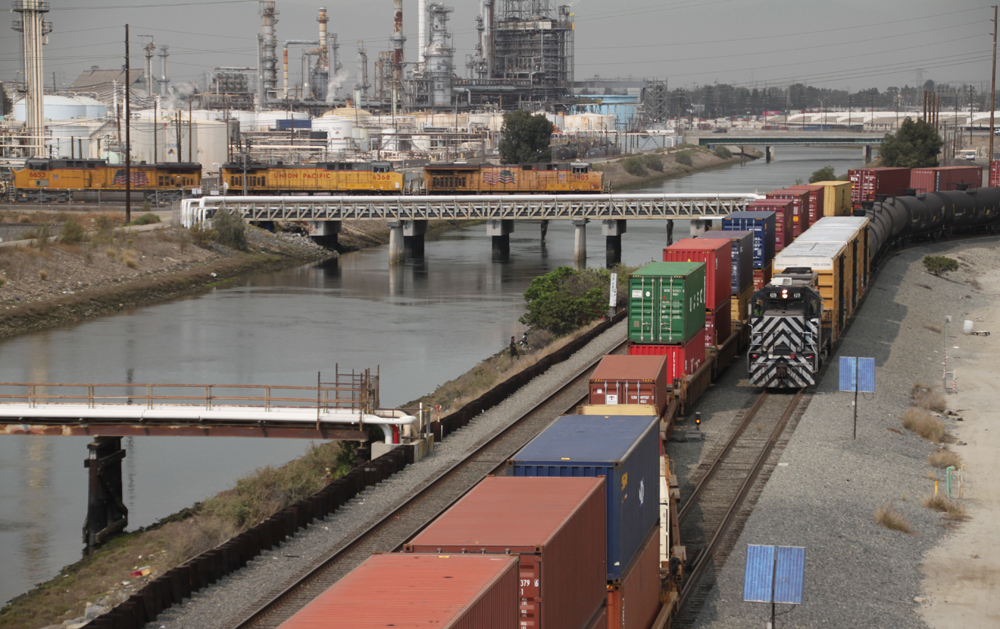
SACRAMENTO, Calif. — The U.S. Department of Transportation and state of California will work together on a program to address supply-chain issues through infrastructure projects under an agreement announced last week.
The Emerging Projects Agreement aims to facilitate projects and financing for transportation projects to improve the movement of imports and exports and “bring supply chain processes into the 21st century,” according to a press release.
The agreement is meant to aid projects such as port-specific upgrades, expanding freight-rail capacity, developing inland port facilities, and railyard and truck electrification. Funding support could come through U.S. DOT programs such as Railroad Rehabilitation and Improvement Financing (RRIF) and the Transportation Infrastructure Finance and Innovation Act (TIFIA).
“Our supply chains are being put to the test, with unprecedented consumer demand and pandemic-driven disruptions combining with the results of decades-long underinvestment in our infrastructure,” said U.S. Transportation Secretary Pete Buttigieg. “…Today’s announcement marks an innovative partnership with California that will help modernize our infrastructure, confront climate change, speed the movement of goods and grow our economy.”
California Gov. Gavin Newsom said the agreement “will help us jump start and support multiple infrastructure projects to improve our supply chain, making sure goods get to where they need to go faster, cheaper, and more environmentally friendly.”














And how about the ever-infamous ILA, and their slow-motion crane work?
Also the non-24 hour work day…unlike most of the rest of the worlds ports, technically the ports could automate the ILA out of a job, some cranes are completely automated and the whole loading/unloading process is just run by a computer…of course then you have to replace the crane operator with a computer person, but you could reduce staffing by magnitudes greater that way.
Charles, you right about California causing the majority of the problem. Trucks built before 2010 are no longer permitted to operate in our once great state. I have heard stories of trucks driving from the ports to the the AZ border, or Las Vegas just to hand off containers to non-compliant rigs, so they may complete the journey to the eventual destinations! If our governor really wanted to clear out the backlog of containers stacked up on the wharfs, then he would permit pre-2010 rigs to operate to and from the ports until the backlog is gone.
Those containers shouldn’t even be on the Interstate system, even if only going to Las Vegas, Salt Lake City, Phoenix, Tucson, etc.. If the shipper/receivers were more efficient at inventory control, scheduling unloading and delivery there’s absolutely no reason those destinations couldn’t be served by rail. Yes, they’re under the “700 mile” threshold, which is just a made up number because the train would take 2 days instead of one day via OTR, as if that’s critical(it is only when you keep thinking of JIT and the non-existent inventory tax).
California state government isn’t part of the solution, it’s part of the problem, with its anti-energy, anti-trucking policies. California’s jihad for electrification is a big factor, and hardly a solution. In any event, only someone as dense as Pete Buttigieg would think that a project ten or twenty years or more into the future (if it happens at all) would solve a problem that’s critical today.
Pete, go back on paternity leave. We were better off without your inanity. Pete, I had hoped you’d be a star in a Biden cabinet full of flea-brains, but it turns out you’re no better.